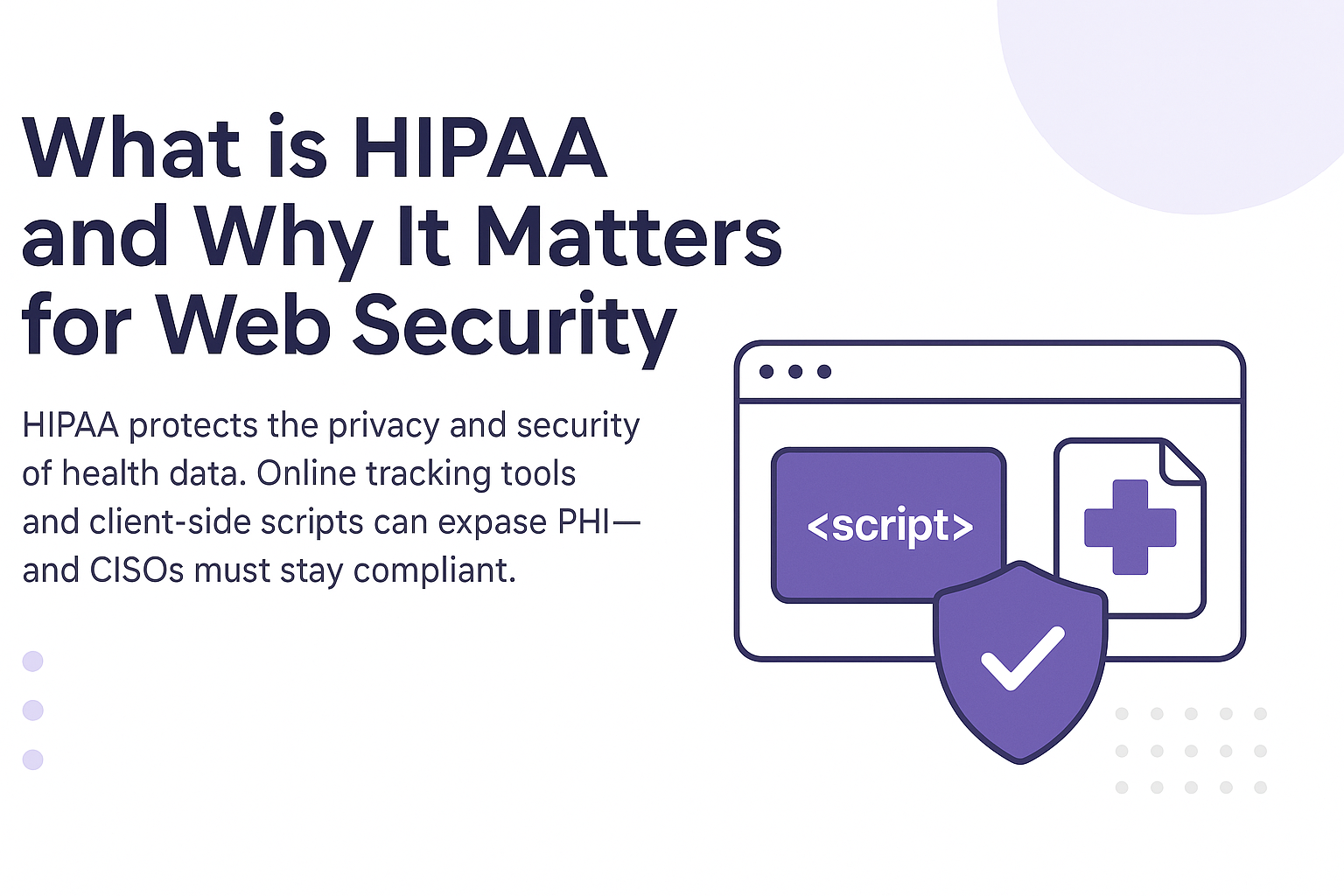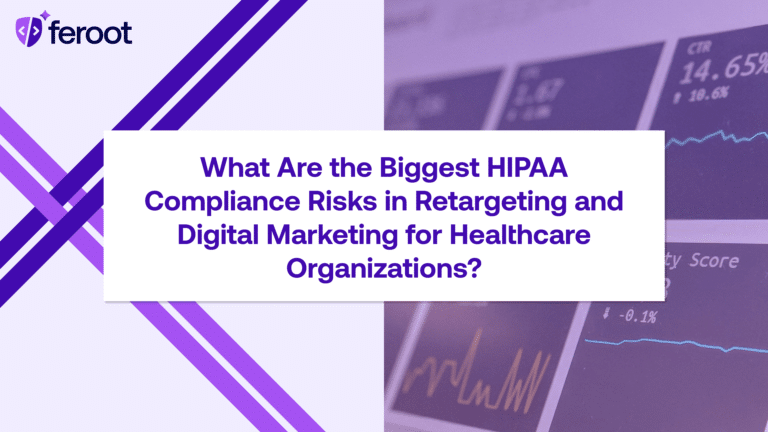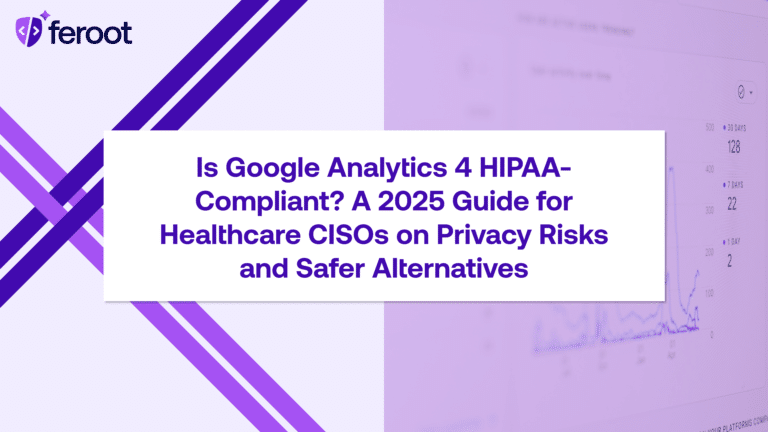Summary
HIPAA is a U.S. federal law that safeguards the privacy and security of individuals’ health information. It’s critical for CISOs, developers, and compliance teams to understand HIPAA’s digital implications—especially as online tracking, client-side scripts, and third-party tools increasingly put Protected Health Information (PHI) at risk.

What Is HIPAA?
The Health Insurance Portability and Accountability Act (HIPAA) is a U.S. federal law enacted in 1996 that sets national standards for the protection of sensitive patient health information. It applies to “covered entities” like healthcare providers, insurers, and their business associates.
The law is enforced by the U.S. Department of Health and Human Services (HHS) and includes rules such as:
Privacy Rule: Controls how PHI is used and disclosed
Security Rule: Requires safeguards for electronic PHI (ePHI)
Breach Notification Rule: Mandates notification when PHI is compromised
How It Works
HIPAA requires covered entities and business associates to:
- Protect ePHI with administrative, physical, and technical safeguards
- Limit use and disclosure of PHI without patient consent
- Provide breach notifications when PHI is accessed without authorization
In the context of web applications and websites, HIPAA can be triggered by tools like:
- Online tracking pixels (e.g., Meta Pixel, GA4)
- Session replay scripts
- Form autofill or chatbot integrations
- Third-party analytics or marketing scripts
Even unintentionally sharing PHI with unauthorized third parties through client-side code can be a HIPAA violation.
Who Must Comply With HIPAA
- Healthcare providers with online portals, appointment scheduling, or digital intake forms
- Health insurers using third-party marketing or analytics tools
- Telehealth apps and platforms that process PHI
- Business associates like SaaS platforms or digital marketing agencies serving healthcare clients
Real-World Examples
- 2022: Advocate Aurora Health disclosed PHI exposure due to Meta Pixel on patient portals—affecting over 3 million individuals.
- 2023: Novant Health paid a $6.6M settlement over Meta Pixel data sharing on their website.
- Ongoing: The HHS has issued multiple bulletins warning about HIPAA violations stemming from tracking technologies on health-related websites.
How to Prevent PHI Leakage
- Conduct regular script and tag audits to detect third-party code that could transmit PHI
- Use content security policies (CSPs) and Subresource Integrity (SRI) to control external script behavior
- Implement monitoring solutions to detect unauthorized data collection in real time
- Avoid placing tracking technologies on pages where PHI is accessible without strong consent and security controls
How Feroot Helps
Feroot’s HealthData Shield AI protects healthcare organizations and business associates from HIPAA violations by:
Mapping and monitoring all third-party scripts
Detecting unauthorized data collection in real time
Blocking PHI exposure from rogue or misconfigured tracking technologies
Ensuring compliance with HIPAA’s technical safeguards on the client side
FAQ
What does HIPAA stand for?
HIPAA stands for the Health Insurance Portability and Accountability Act.
Can HIPAA apply to websites and apps?
Yes. If your website or app collects, stores, or transmits PHI, it must comply with HIPAA.
What is PHI under HIPAA?
PHI includes any health-related information that can identify an individual—such as name, email, IP address, health conditions, or appointment details.
How can I ensure my site is HIPAA-compliant?
Audit all client-side scripts, avoid unnecessary tracking on health pages, and use solutions like Feroot to monitor and secure ePHI flows.


